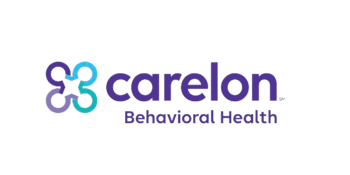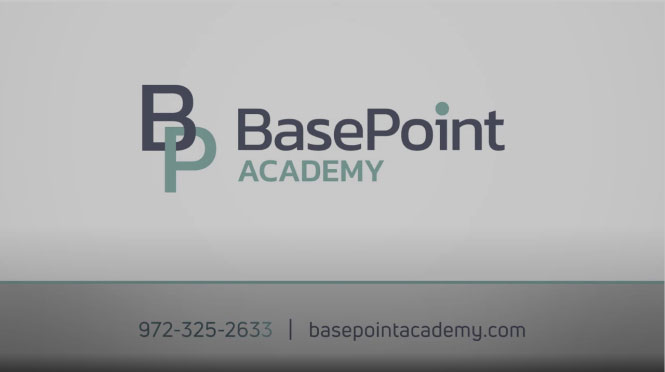Cutting and Self-Harm Therapy Treatment for Teens in Dallas, Texas
At BasePoint Academy, you’ll find compassionate, tailored therapy treatment for teen cutting and self-harm for teens in a therapeutic setting that addresses various challenges. Whether it’s navigating academic stress or coping with peer relationships and mental health concerns, our therapy techniques prioritize teens’ unique needs and experiences, encouraging growth, resilience, and adolescent emotional wellness.
What is Cutting and Self-Harm?
Cutting and self-harm behaviors are the act of intentional self-injury, typically through cutting, scratching, or burning. These actions are often a coping mechanism when experiencing intense emotional distress or overwhelming feelings that are challenging to express or manage. Self-inflicted harm is usually not a suicide attempt but can provide temporary relief from emotional pain by redirecting focus to physical sensations.
However, engaging in self-harm can lead to serious physical and psychological consequences. Physically, it can result in infections, scarring, nerve damage, and, in severe cases, life-threatening injuries. Psychologically, it can perpetuate a cycle of shame, guilt, and low self-esteem, further exacerbating the underlying emotional distress.
Effective treatment for self-harm often involves therapy to address the root causes of the behavior, develop healthier coping mechanisms, and improve emotional regulation skills. Support from friends, family, and mental health professionals is crucial in helping individuals overcome self-harm and find healthier ways to manage their emotions.
Teen Self Harm Admissions and Intake
Our free self-harm test with a licensed clinician will provide you with a recommendation for the appropriate level of care for your teen struggling with mental health. We can also check your insurance coverage levels.
Call us today to schedule a complimentary same-day assessment at (972) 357-1749 or complete our inquiry form.
Teen Self-Harm Therapy and Counseling Admissions form
Contact BasePoint Academy Today
Contact us today to schedule a free confidential assessment for your teen with a licensed clinician.
You can also get in touch to talk with our mental health experts about treatment needs, care options and your insurance coverage levels.
Call: (972) 357-1749Check Your InsuranceCommon Causes of Self-Inflicted Harm in Teenagers
Self-inflicted harm among the youth is a concerning issue that demands attention and understanding. While the causes behind such behaviors are multifaceted and deeply personal, there are common factors that often contribute to these distressing actions. The examples below are not exhaustive but serve to shed light on some prevalent triggers behind Non-Suicidal Self-Injury (NSSI).
Contact us today for Basepoint Academy’s people first methology.
Emotional Distress
Emotional distress is a major cause of self-harm in teens. Academics, family issues, identity struggles, and more can be overwhelming. Without healthy coping mechanisms or support, teens may resort to self-injurious behavior. Underlying mental health conditions can worsen emotional distress. It’s essential to recognize signs of teenage stress and provide appropriate support.
Peer Pressure
Teenage peer pressure is a powerful influence on adolescent behavior, often driving teens to conform to the norms and expectations of their social groups. During adolescence, peers play a central role in shaping attitudes, beliefs, and behaviors, leading the desire to fit in and gain acceptance from peers can override individual judgment and lead to decisions that compromise one’s well-being.
Relationship Difficulties
Relationship difficulties can significantly impact teens’ mental health and emotional well-being, particularly during a time when social connections are paramount. Conflicts with family members, friends, or romantic partners can lead to feelings of loneliness, rejection, and insecurity. Unresolved issues can contribute to stress, anxiety, and depression, affecting various aspects of adolescent development.
Academic or Performance Pressure
Academic pressure is a significant stressor for teens, stemming from societal, parental, and personal expectations. This pressure can lead to feelings of inadequacy, anxiety, and burnout, with students often resorting to unhealthy coping mechanisms. Balancing academic success with overall teenage well-being is crucial, requiring a shift towards a more holistic approach to education that prioritizes mental health and personal growth.
Bullying or Harassment
Bullying and harassment are pervasive issues among adolescents, manifesting in various forms such as physical, verbal, or cyberbullying and causing emotional distress and social isolation. The persistent nature of bullying can lead to long-lasting effects on adolescent psychology, including depression, anxiety, and even suicidal ideation.
Identity and Self-image Issues
Identity and self-image issues are common challenges faced by adolescents as they navigate the complexities of self-discovery and societal expectations. The adolescent development stage comes with questions of identity, sexuality, and self-worth, often influenced by peer comparison and media portrayal. Conflicting internal and external messages can lead to feelings of insecurity, confusion, and low self-esteem.
Trauma or Abuse
Trauma or abuse can have profound, lasting effects on adolescents, impacting their physical, emotional, and psychological well-being. Whether experiencing physical, sexual, or emotional abuse or witnessing violence within their families or communities, adolescents are vulnerable to developing trauma-related symptoms. These experiences can disrupt normal developmental processes, impairing relationships, academic performance, and overall functioning.
Mental Health Disorders
Mental health disorders are prevalent triggers for self-harming tendencies among adolescents, exacerbating their emotional distress and intensifying feelings of hopelessness and despair. Some conditions can significantly impair the ability to cope with overwhelming emotions and stressors, leading to self-injurious behaviors as a maladaptive coping mechanism. Additionally, untreated or undiagnosed mental health disorders may increase the risk of self-damaging behavior.
BasePoint Academy Accepts health Insurance
We accept most major health insurance providers in Texas and can check your treatment coverage levels on your behalf.
How to Find a Cutting and Self-Harm Therapy Treatment Center for Teens Near Dallas, Texas
BasePoint Academy operates multiple treatment facilities in and around Dallas, Texas. We specialize in adolescent psychology and pride ourselves on early intervention when addressing teens’ mental health. We offer same-day self harm free assessments to determine the most appropriate level of care for your child, ensuring that our patients receive timely, effective support tailored to their needs.
- Arlington, Texas: 3900 Arlington Highlands Blvd, Suite 237, Arlington, TX 76018
- Forney, Texas: 713 W Broad St, Suite 200, Forney, TX 75126
- Frisco, Texas: 8275 Judges Way, Suite 100I, Frisco, TX 75036
- McKinney, Texas: 4733 Medical Center Drive, McKinney, TX 75069

Self-Harm Therapy Treatment in Arlington, Texas
- BasePoint Academy – Arlington, Texas: 3900 Arlington Highlands Blvd, Suite 237, Arlington, TX 76018, United States
Self-Harm Therapy Treatment in Forney, Texas
- BasePoint Academy – Forney, Texas: 713 W Broad St, Suite 200, Forney, TX 75126, United States
Self-Harm Therapy Treatment in McKinney, Texas
- BasePoint Academy – McKinney, Texas: 4733 Medical Center Drive, McKinney, TX 75069, United States
How To Find Self-Harm Therapy Treatment for Teens Near Me
Finding treatment and therapy for self-harming or self-cutting involves a multitude of exploratory avenues. Below, we’ve provided step-by-step instructions to assist those parenting teenagers in locating the necessary support that aligns with your child’s nuanced needs.
- Online Research: Use search engines like Google or Yahoo and enter keywords like “group therapy teens self-harm” or, more specifically, “self-harm cutting treatment in Dallas, Texas.”
- Compile Results: Examine your search results to find treatment centers or mental health professionals specializing in working with adolescents and young adults. Gather details on the services provided, their expertise, and their approach, and ensure accreditation.
- Online Directories: Search for mental health professionals and therapy centers on directories like Psychology Today, GoodTherapy, or TherapyDen, using filters such as location, specialties, and treatment approaches.
- Your Insurance Provider: If you have health insurance, check with your provider to find out if they cover treatment for self-harming impulses and which therapists or centers are in-network. Also, ask about any requirements for obtaining coverage, such as prior authorization or referrals.
- Consultations: After identifying potential therapy centers or professionals, schedule consultations or introductory sessions. This will provide an opportunity to discuss your teen’s specific needs, ask questions about their approach to adolescent psychology, and assess whether it suits your child.
- Recommendations: Seek recommendations from trusted friends, family members, pediatricians, other parents, or school counselors who may have experience with adolescent mental health issues. Personal referrals can provide valuable insights and aid in narrowing down your options.
Contact BasePoint Academy Today
Contact us today to schedule a free confidential assessment for your teen with a licensed clinician.
You can also get in touch to talk with our mental health experts about treatment needs, care options and your insurance coverage levels.
Call: (972) 357-1749Check Your Insurance
Statistics on Teen Cutting and Self-Harm
Among adolescents (13-17) in Texas, over 160,000 cases of depression and nearly 190,000 instances of self-harming behaviors are reported annually. Self-harm typically begins at the age of 13, with skin cutting being the most common form. Adolescents from single-parent families or with siblings are more prone to self-harm due to family structure adjustments.
Approximately 12% of self-harming teens have underlying mental health disorders, and females are three times more likely to self-harm than males. Globally, about 17% of adolescents engage in self-harm, influenced by rumination and various risk factors like mental disorders and adverse childhood experiences. Additionally, self-harming teens may be more susceptible to drug or alcohol use.
Does Insurance Cover Self-Harm Treatment for Teens?
Yes, though it varies depending on the insurance policy and other factors. Some plans may cover the full extent of mental health services, including therapy and counseling for self-harm, while others have limitations or exclusions. In addition, prior authorization may be required for certain services. Review your insurance policy or contact us to understand your coverage details.
We can check your insurance for teen self-harm treatment and provide specifics on potential out-of-pocket expenses, such as copayments and deductibles. Understanding the financial aspects of your insurance coverage will facilitate well-informed decisions regarding your child’s treatment needs.
Different Types of Treatment Programs in Dallas, Texas
In Dallas, Texas, various treatment programs cater to diverse needs, offering comprehensive support and teen mental health resources for addiction and other behavioral health concerns. These programs encompass a range of approaches, from outpatient youth counseling and therapy to residential treatment facilities and teenage support groups. Below, we’ll highlight some of the different types of treatment programs available.
Call BasePoint Academy at (972) 357-1749 or contact us online.
Partial Hospitalization Program for Teen Self-Harm
Partial Hospitalization Programs (PHP) for teen self-harming behavior offer intensive outpatient treatment and comprehensive care for adolescents struggling with self-injurious actions. These programs typically involve structured adolescent therapy sessions, psychiatric evaluations, medication management, and skill-building activities set in a supportive environment conducive to teenage well-being. PHP often incorporates evidence-based therapies such as Dialectical Behavior Therapy (DBT), Cognitive-Behavioral Therapy (CBT), and group therapy to address underlying issues contributing to self-hurt. These therapeutic approaches teach self-harming coping mechanisms and emotion regulation techniques. Additionally, PHPs may involve family therapy sessions to enhance communication and support within the familial unit. Contact us to learn more about BasePoint Academy’s partial hospitalization programs in the Dallas, Texas, area.Intensive Outpatient Program for Teen Self-Harm
Intensive Outpatient Programs (IOP) for self-harm treatment for teens provide structured, comprehensive intervention while allowing adolescents to continue living at home. These programs usually offer a combination of individual therapy, group therapy, family therapy, and psychiatric evaluations tailored to address the underlying causes of self-harming habits and teach healthy coping mechanisms.
IOP often focus on building skills such as emotion regulation, distress tolerance, and interpersonal effectiveness through evidence-based modalities like Dialectical Behavior Therapy (DBT) and Cognitive-Behavioral Therapy (CBT). With a flexible schedule that accommodates school commitments and family life, IOP offer adolescents the support needed to address self-abuse. At the same time, they can maintain daily routines and connections with their support systems. Call (972) 357-1749 today to learn more about the IOPs at BasePoint Academy.
Inpatient Residential Treatment for Teen Self-Harm
Inpatient residential treatment programs for teens struggling with self-harm provide round-the-clock care and support in a highly restrictive and structured environment. These programs offer a therapeutic setting where adolescents receive comprehensive treatment for self-mutilation, along with any underlying mental health concerns.
In addition to individual and group therapy for self-harming, residents may participate in activities such as art therapy, recreational therapy, and life skills training to promote healing and personal growth. With a focus on safety, stabilization, and intensive therapeutic intervention, inpatient residential treatment programs provide intensive support. While BasePoint Academy doesn’t offer inpatient treatment, we do provide a diverse array of less restrictive, structured, practical programs designed to address mental health conditions, including those often correlated with teen self-harm. Contact us today for further details regarding treatment program options for your child.
Psychotherapy Counseling Services for Teen for Self-Harm
Psychotherapy counseling services offer specialized support and intervention tailored to address unique needs. Through individualized adolescent therapy sessions, your teen will have the opportunity to explore the underlying factors contributing to their self-destructive behavior in a safe and confidential environment.
Therapists utilize evidence-based approaches to help teens develop healthier coping mechanisms, improve emotional regulation skills, and enhance self-awareness. With a focus on promoting teenage resilience, healing, and personal growth, psychotherapy counseling services provide adolescents with the tools and support they need to overcome self-harm and build a brighter future. At BasePoint Academy, our dedication lies in delivering tailored counseling services crafted to meet the unique requirements of adolescent mental health issues—call (972) 357-1749 to initiate your child’s recovery today.
Group Therapy for Teen Self-Harm
Group therapy for teen self-harm offers a supportive, empathetic environment where adolescents and young adults can connect with peers facing similar challenges. Led by trained therapists, these sessions provide a platform to share experiences, express emotions, and learn from one another’s coping strategies. Group therapy promotes belonging and reduces isolation, fostering a supportive community that encourages accountability and mutual support.
Contact BasePoint Academy Today
Contact us today to schedule a free confidential assessment for your teen with a licensed clinician.
You can also get in touch to talk with our mental health experts about treatment needs, care options and your insurance coverage levels.
Call: (972) 357-1749Check Your InsuranceWhich Health Insurance Providers Cover Self-Harm Treatment for Adolescents?
Many health insurance providers offer coverage for self-harm treatment for teens. Companies like Blue Cross Blue Shield of Texas, UnitedHealthcare, Cigna, Optum, and Aetna are prominent insurance providers providing mental health support for addressing various teenage challenges, including self-injurious behaviors. Contact us today to check your insurance coverage.
Signs and Symptoms of Cutting and Self-Harm
Understanding the signs and symptoms of cutting and self-harm is crucial for early identification and intervention. Adolescents struggling with distress may resort to self-injury as a coping mechanism. Below, we’ll explore common signs and symptoms of self-injurious behaviors requiring an empathetic approach when addressing them. Contact BasePoint Academy at (972) 357-1749 to initiate timely support and treatment.
Cuts, scratches, bruises, or burns on the body
Physical signs like cuts, scratches, bruises, or burns on the body are common indicators of self-harming behavior. These self-inflicted wounds may appear on areas easily accessible, such as the arms, legs, or abdomen. Individuals engaging in self-harm often use sharp objects like razors or knives to create cuts or scratches, or they may burn themselves with cigarettes or lighters.
These injuries can vary in severity, from superficial scratches to deeper cuts or burns requiring medical attention. It’s essential to approach these physical signs with sensitivity and compassion, recognizing that they may be a manifestation of underlying emotional pain or distress. Early recognition can prompt intervention and support to address the root causes and promote healing and recovery—call (972) 357-1749 for professional support in navigating teen self-harm.
Wearing Clothes to Hide Injuries
If you notice your teen consistently wearing clothes that cover their body, even in warm weather, it could be a sign that they’re hiding self-injuries. Long sleeves, pants, or high-necked shirts may be used to conceal cuts, scratches, or burns. This behavior may indicate feelings of shame, guilt, or a desire to keep their struggles private.
Finding Sharp Objects in Strange Places
Discovering sharp objects in unusual locations, like hidden in drawers, under the bed, or in backpacks, could signal self-destructive behavior. These objects may include razors, knives, broken glass, or paper clips. If you notice such items in unexpected places, it’s essential to approach the situation with care and concern, express your support, and listen without judgment.
Spending Lots of Time Alone
If your child is often isolating themselves, it may indicate struggles with emotional difficulties, including self-harm. Spending excessive time alone can be a way to hide distress or engage in harmful behaviors without detection. Approach the situation empathetically, offering support and encouraging open communication to help them seek assistance and healthier coping mechanisms.
Mood Swings or Irritability
Frequent mood swings or irritability, especially when disproportionate to the circumstances, can indicate underlying emotional distress or mental health issues, including self-abuse. Adolescents experiencing intense emotional turmoil may exhibit rapid shifts in mood, ranging from sadness and despair to anger and agitation.
Feeling Bad About Oneself
Feeling persistently negative about oneself and experiencing low self-esteem or self-worth can often be a precursor to self-harm. Teens may harbor intense feelings of guilt, shame, or worthlessness, driving them to engage in harmful behaviors as a way to cope or punish themselves. Encouraging self-compassion and providing reassurance can be pivotal in breaking this cycle.
Struggling with Emotions
Struggling with teenage emotions, such as feeling overwhelmed, anxious, or out of control, can contribute to self-harming tendencies. Adolescents grappling with intense emotional turmoil may lack effective coping mechanisms, leading them to resort to self-injury to manage or numb their feelings.
Doing Things Without Thinking
Engaging in impulsive behaviors without considering the consequences is a common characteristic among teens who struggle with self-harm. Acting impulsively, particularly in moments of heightened emotional distress, can lead to self-injurious behaviors as a way to alleviate immediate feelings of discomfort or distress.
These actions often occur without forethought or planning, driven by an urgent need to find relief from overwhelming emotions. Recognizing and addressing impulsivity can be key to developing healthier coping strategies and seeking support to manage emotions more effectively.
Talking About Self-Harm or Suicide
When individuals talk openly about self-harm or suicide, it’s a significant indicator of their internal struggles and distress. Expressing thoughts or intentions related to self-harm or suicide should never be dismissed or ignored. It’s essential to approach such conversations compassionately, actively listen without judgment, and express genuine concern for their well-being.
Encouraging open dialogue and providing a safe space to share feelings can help teens feel supported and understood, facilitating the process of seeking professional help and intervention to address their emotional needs and prevent self-harm or suicide attempts. Learn more about BasePoint Academy’s treatment for suicidal youth by calling (972) 357-1749.
If this is an immediate concern, contact emergency services or the national suicide and crisis line by dialing 988.
How Much Does Person-Centered Therapy for Teenagers Cost?
The cost of person-centered teen therapy interventions can vary according to several factors, including the therapist’s credentials and experience, the duration of treatment, and your child’s specific needs. Generally, fees for individual psychotherapy sessions average between $100 and $200 or more per session. To verify insurance coverage or receive expense details tailored to your needs, call (972) 357-1749.

Contact BasePoint Academy Today
Contact us today to schedule a free confidential assessment for your teen with a licensed clinician.
You can also get in touch to talk with our mental health experts about treatment needs, care options and your insurance coverage levels.
Call: (972) 357-1749Check Your InsuranceMost Common Forms of Self-Harm in Teenagers
Self-harm among teenagers is a complex, concerning issue that manifests in various forms, each with its own underlying motivations and implications. Understanding the most common forms of self-harm is essential for recognizing and addressing these behaviors effectively. In the following sections, we’ll explore some of the prevalent methods of self-harm among teenagers, shedding light on their characteristics and more.
Cutting
Skin cutting is one of the most prevalent forms of self-harm among teenagers, involving the intentional infliction of cuts or lacerations on the body. Adolescents may use sharp objects such as knives, razors, or scissors to create superficial or deep wounds, typically on areas that are easily concealed, such as the arms, legs, or abdomen.
Cutting can lead to serious physical and psychological consequences if left untreated. Offering non-judgmental support and encouraging professional help are vital steps in addressing cutting behaviors and promoting healthier coping strategies for emotional regulation.
Burning
Burning, like cutting, is a common form of self-harm among teenagers, involving the intentional application of heat or flame to the skin. While it may offer temporary relief, it can result in severe physical and psychological harm, highlighting the need for supportive intervention and professional help.
Hitting/ Punching
Hitting or punching oneself is characterized by deliberately striking one’s own body with fists or objects. This behavior can result in physical injury, bruises, and tissue damage, reflecting intense emotional turmoil. Engaging in such self-damaging behavior may be a means of expressing inner pain or frustration, seeking temporary relief, or a sense of control.
Scratching
Scratching is a common form of self-harm involving the deliberate application of pressure or abrasion to the skin using fingernails or sharp objects. While scratching may seem less severe than other forms of self-injury, it can still result in self-harm scars as a result of tissue damage and/or infection.
Adolescents may scratch themselves as a means of coping with emotional distress or overwhelming feelings, seeking temporary relief or a distraction from inner turmoil. It’s crucial for caregivers and support systems to recognize the signs of scratching and provide compassionate intervention, encouraging professional help to address the underlying issues contributing to this harmful behavior.
Hair Pulling (Trichotillomania)
Hair pulling, also known as trichotillomania, is a compulsive behavior characterized by the recurrent urge to pull out one’s hair. This can result in noticeable hair loss and bald patches. This condition often begins in adolescence and can be triggered by stress, anxiety, or boredom.
Individuals with trichotillomania may experience a sense of relief or gratification upon pulling out their hair. Still, they may feel ashamed or embarrassed by their inability to control the behavior. It’s essential to seek professional help, as this condition can have significant consequences if left untreated.
Biting
Biting oneself is a form of self-harm observed among teenagers, characterized by the intentional application of teeth to the skin, resulting in tissue damage and potential injury. This behavior may manifest as biting of the hands, arms, or other body parts and can lead to bruises, cuts, or broken skin.
Interfering with Wound Healing
Interfering with wound healing, a concerning behavior seen in self-harm, involves reopening or exacerbating existing wounds, preventing them from healing properly, and prolonging the cycle of injury. Recognizing and addressing this behavior is crucial to avoid serious complications and facilitate healing and recovery.
Ingesting Harmful Substances
Ingesting harmful substances, a dangerous form of self-harm among teenagers, involves deliberately consuming toxic materials, such as household cleaners, medications, or other chemicals, to cope with emotional distress. This behavior poses serious health risks and requires immediate intervention and support to address underlying issues and prevent further harm.

How Much Does Teen Self-Harm Therapy Treatment Cost in Dallas, TX?
In Dallas, Texas, the cost of therapy for teen self-harm varies based on factors like therapy type, insurance coverage, and duration. Outpatient adolescent therapy sessions with licensed therapists average $100 to $200, while specialized treatments or inpatient care may incur higher fees. For personalized insurance confirmation or expense details, call (972) 357-1749.
Statistics on Teen Self-Inflicted Harm and Self-Destructive Behaviors
- Among adolescents aged 13-17 in Texas, the estimated 12-month prevalence rates indicate 160,877 cases of depression and 186,382 instances of self-injury or self-harming behaviors.
- The typical age of onset for self-harm is 13 years old.
- Skin cutting is the most prevalent form of self-harm.
- A meta-analysis revealed that adolescents from single-parent families or those with siblings are comparatively more prone to engaging in Non-Suicidal Self-Injury (NSSI) due to difficulties adjusting to the new family structure.
- Roughly 12% of teenagers who acknowledge engaging in self-harm also have an underlying mental health disorder.
- Those who identify as female exhibit a higher likelihood of self-harm compared to those who identify as male, with a ratio of approximately 3 to 1.
- Globally, the prevalence of non-suicidal self-injury and self-harm among adolescents is estimated to be around 17%.
- Multiple studies have demonstrated that rumination, characterized by individuals fixating on their thoughts following an adverse event, significantly influences both non-suicidal self-injury and suicidal behavior.
- A recent meta-analysis identified mental disorders, low health literacy, adverse childhood experiences, bullying, behavioral issues, being female, and physical symptoms as risk factors associated with Non-Suicidal Self-Injury (NSSI).
- Apart from experiencing depression, anxiety, or other mental health challenges, adolescents who engage in cutting behaviors may be more inclined to use drugs or alcohol.
Effectively Treat Teen Mental Health With BasePoint Academy
We can help your teen and your family address and overcome mental health concerns with expert care and a safe environment. Call today to discover the treatment for long-term healing.









